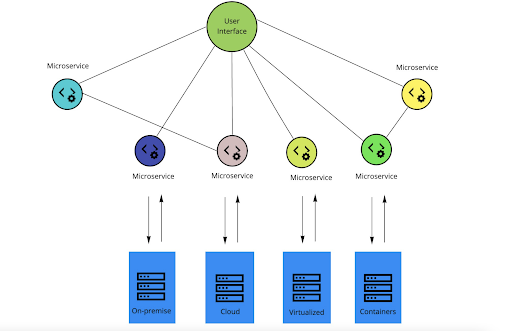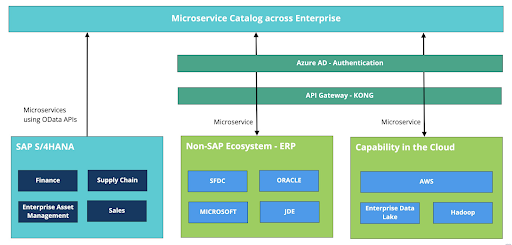Adoption of Agile methods and approaches in executing transformational initiatives is quite apparent these days. The expectations shift to faster time-to-value has further endorsed the Agile environment that the company must adopt. This is to deliver business benefits in increments and at a faster rate. The concept of an agile environment is of great value but its realization is hindered by the inherent constraints in practices and procedures that are being followed within an organization. In this article, I will focus on the Enterprise Integration Architecture aspect of the transformation and how Microservices can provide the foundation for speed and resiliency.
Bottlenecks to Agile
A typical organization relates to the scenario of a complex environment of applications needing to be connected to serve its business operations. A variety of technologies, such as SAP Process Integration and Orchestration (PI/PO), Application Programming Interface(API), and a myriad of middleware connectors deploy to build point-to-point solutions for information exchange. This integration architecture framework has an inherent constraint of maintaining these integrations that are large, complex, and rigid with agility. Further, they are time-consuming in making modifications to adapt to the evolving business needs.
What is Microservices?
Microservices is a service-oriented architecture framework that is flexible, scaleable, and efficient. It is an innovative approach that an organization can move towards to deliver an improved and better user experience. Below is a depiction of a conceptual Microservices architecture framework:

Figure 1 : Conceptual Microservices Framework
Microservices is a collection of services that are small building blocks organized around business capabilities, easily maintainable, independently deployable. You can implement them using different programming languages, databases, hardware and software environments.
With Microservices based integration pattern, the objective is to develop a catalog of independent deployment units / modules across the enterprise. Additionally, these self-contained module systems have the characteristics of shorter time- to-market, autonomy, replaceability, and flexibility. View a simplistic illustration of such a pattern below:

Figure 2 : Representative Microservices Architecture
Microservices architecture framework inherently enables one of the key tenets of DevOps. That is, Continuous Delivery; the ability to promote changes to production. Additionally, to provision them to the users quickly and with confidence in a sustainable manner.
Opportunity to Transform…
Microservices based architecture framework that is modular, self- contained, and scalable, affords the opportunity to achieve agility that an organization envisions. In conclusion, in your pursuit of providing a seamless user experience, transitioning from a Monolithic architecture to Microservices integration pattern should be an obvious choice.
If you are interested in viewing similar articles, visit our blog, here.
View our LinkedIn, here.